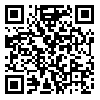BibTeX | RIS | EndNote | Medlars | ProCite | Reference Manager | RefWorks
Send citation to:
URL: http://tkj.ssu.ac.ir/article-1-521-en.html
Introduction: Due to the poor working conditions of agricultural equipment operators, it needs to perform studies to improve the ergonomic working conditions with these machines. Accordingly, the aim of this study was an ergonomic comparison of clutching of MF285 and MF399 tractors by muscle electromyography method.
Methods: 25 persons were selected for this experiment. Investigations were performed on six muscles including: Medial gastrocnemius, Lateral gastrocnemius, Vastus medialis, Vastus lateralis, Quadratus Lumborum and Trapezius. Measurements were performed for each person on each muscle in 30 seconds before the clutching, during 60 seconds while clutching and 60 seconds of rest after clutching.
Results: The results revealed that the highest RMS electrical activity after 60 seconds clutching compared to before clutching of MF285 tractors belonged to Vastus medialis(6.16) and Medial gastrocnemius (2.82), respectively. During clutching of MF399 tractor, vestus medialis and lateral gastrocnemius muscles had the highest tension. For all muscles except Lateral gastrocnemius, RMS electrical activity ratio during clutching of MF285 tractor were higher than MF399 tractor.
Conclusions: As a consequence during clutching, MF285 tractor operators of had high stress in own muscles. Generally, two muscles of Vastus medialis and Medial gastrocnemius were under more stress during clutching. Also, these two muscles got back into recovery mode in longer period of time compared to the other muscles after clutching.
Received: 2014/08/2 | Accepted: 2016/06/29 | Published: 2016/06/29
| Rights and permissions | |
 |
This work is licensed under a Creative Commons Attribution-NonCommercial 4.0 International License. |





